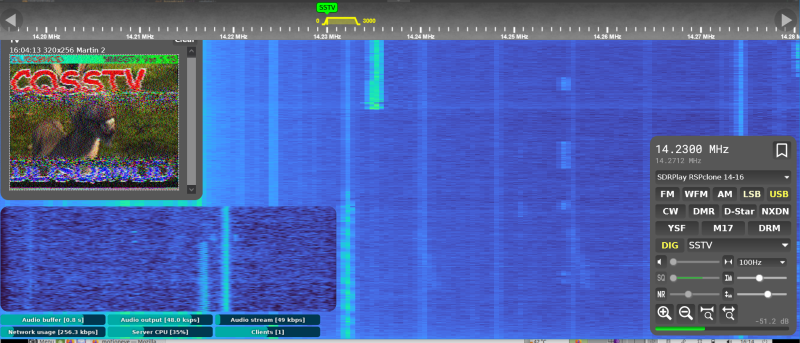Possible fixes for new versions of SDR# crashing with RTL-SDRs
SDR# (SDRSharp) is our recommend software for RTL-SDRs due to it's high popularity in the community, relatively simple to learn and use interface, and host of features and third party plugins available.
Recently we're starting to see a lot of Facebook and forum posts about a new bug introduced in SDR# 1911 - 1913 so we thought we'd make a global post. This new bug has introduced a problem which causes a crash when attempting to change frequencies with RTL-SDR dongles (of any make or brand). It appears to be an issue stemming from libusb, but the exact issue is still unknown. The SDR# author is aware of the issue, but as RTL-SDR dongles are supported in SDR# for free with no guarantee, it may be several weeks until he has the time to investigate the issue fully. In the meantime we want to note some some partial fixes that we have found.
The first fix is to use our "rtl-sdr-blog" drivers instead of the default osmocom drivers. Our Quickstart guide now shows how to download these drivers and install them into SDR#, so if you want to try this solution, please see the guide. We're not exactly sure why this driver helps, but it may be due to our version being compiled against a newer version of libusb. However, this fix is only partial. While it no longer crashes on every frequency change, it will still crash approximately 5% of the time on a frequency change, which can add up when surfing through the spectrum rapidly, or when using frequency scanners.
We have also found a second fix that almost completely eliminates the crash, but it appears that it only works on some PCs. This fix is to use our rtl-sdr-blog drivers, and at the same time use Zadig to install the "libusb-win32" version of libusb, instead of the WinUSB version. However, the libusb-win32 is old, and it only appears to work on some PCs. On others it causes SDR# to crash as soon as the RTL-SDR is loaded.
Alternatively you can simply use a legacy version of SDR# by clicking the "Latest dotnet x.x build" links on the SDR# downloads page.
The final alternative would be to use another program like SDR++, which is very similar to SDR#, but without a large amount of plugins available yet. We have also added a SDR++ installation guide to our quickstart guide.

